 W
WThe 4.2 cm Pak 41 was a light issued to German airborne units in World War II. This gun was externally similar to the 3.7 cm Pak 36, using a modified version of the latter's carriage, but used the squeeze bore principle to boost its velocity, and hence armour-piercing ability. The bore had a diameter of 42 mm (1.7 in) at the chamber, but tapered down to 28 mm (1.1 in) at the muzzle. Production was terminated in June 1942, after the delivery of 313 guns. By November 1943, 47 remained in service.
 W
WThe 5th Mountain Division of the German Army was established in the Salzburg region in October 1940, out of units taken from the 1st Mountain Division and the 10th Infantry Division. Its first action was in the 1941 Balkans Campaign, when it took part in Operations Marita and Merkur; in the latter it was used in an air-landing role. In November, it returned to Germany for refitting, and in April 1942 it was deployed to the Eastern Front, where it joined Army Group North on the Volkhov Front. In April 1943 it was redeployed to Italy. It fought out the remainder of the war in Italy and the Western Alps, and surrendered to the U.S. Army near Turin in May 1945.
 W
WThe 6th Mountain Division was established in June 1940, and was deployed to France for occupation duties. In December it was relocated to Poland, where it remained until the spring of 1941. It then took part in Operation Marita, the invasion of Greece during the Balkans Campaign. In September it was relocated to northern Finland, where it operated in Lapland. From July 1942 onward it was part of the 20th Mountain Army along the Arctic coast. It withdrew into Norway when the Germans evacuated Finland in late 1944, and surrendered to the British at the end of the war in 1945.
 W
WThe 7.5 cm Feldkanone 16 neuer Art was a field gun used by Germany in World War II. Originally built as the World War I-era 7.7 cm FK 16, surviving guns in German service were re-barrelled during the early 1930s in the new standard 7.5 cm calibre. It was not modernized for motor towing and retained its original wooden spoked tires and two crew seats on the face of the gun shield.
 W
WThe 10 cm schwere Kanone 18 was a field gun used by Germany in World War II. The German army wanted a new 10.5 cm gun as well as 15 cm howitzer which were to share the same carriage. Guns are heavier than howitzers due to the longer barrel. This also led to the 15 cm sFH 18. As such both weapons had a similar weight and could be carried by a similar carriage. By 1926 Krupp and Rheinmetall had specimen designs, and prototypes were ready by 1930, but was not fielded until 1933–34. Both Krupp and Rheinmetall competed for the development contract, but the Wehrmacht compromised and selected Krupp's carriage to be mated with Rheinmetall's gun.
 W
WThe 19th Grenadier Division of the German Army in World War II was formed in October 1944 from the depleted 19. Luftwaffen-Sturm-Division, which was transferred to the Heer ("Army") and renamed 19. Volksgrenadier-Division.
 W
WThe 20 cm leichter Ladungswerfer was a spigot mortar used by Germany during World War II. It was used by engineers to demolish obstacles and strongpoints. It was gradually withdrawn from front-line service from 1942.
 W
WThe German Lapland Army was one of the two army echelon headquarters controlling German troops in the far north of Norway and Finland during World War II. It was established in January 1942, and renamed the 20th Mountain Army in June 1942. On 18 December 1944, the 20th Mountain Army absorbed the German Army of Norway.
 W
WThe 21st Army was a German field army in World War II.
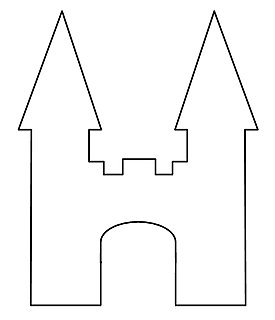 W
WWith the annexation in 1938 of Austria by Nazi Germany, what was once the 4th Austrian Division was incorporated into the Wehrmacht and re-designated the 45th Infantry Division. In the 1939 Invasion of Poland, the division was on the right wing of Gerd von Rundstedt's Army Group South.
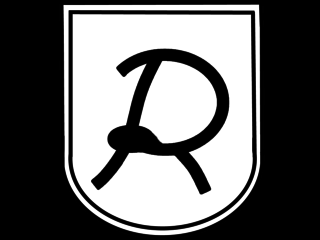 W
WThe 52nd Infantry Division was an infantry division of the German Heer during World War II, which would become the 52nd Training Division in December 1943 and then the 52nd Security Division in April 1944.
 W
WThe 56th Infantry Division was a German infantry division which fought during World War II.
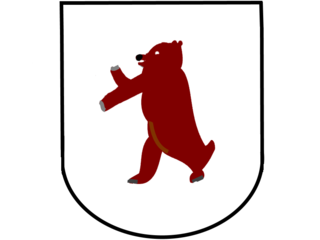 W
WThe 68th Infantry Division was a formation of the German army during World War II. It was formed in 1939, and was initially committed to the German invasion of Poland. It took part in the Battle of France in 1940, and then Operation Barbarossa in 1941 as part of Army Group South. The 68th remained in southern Russia until refitted in Poland in early 1944. Returned to action the 68th fought for rest of the war in the East, in Russia, Slovakia, in the defence of Germany until finally surrendering to the Soviets in Czechoslovakia.
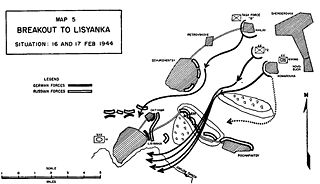 W
WThe 72nd Infantry Division was created on 19 September 1939 in Trier from Grenz-Division Trier, which was a border security unit. It was destroyed on the Eastern front 25 March 1944 and reformed June 1944.
 W
WThe German 73rd Infantry Division was a German military unit which served during World War II. The division consisted of more than 10,000 soldiers, primarily of the infantry branch, with supporting artillery. The division was only semi-motorized and relied on marching for the infantry units and horse-drawn transport for most of the support equipment, especially the artillery.
 W
WThe 76th Infantry Division was created on 26 August 1939 together with the 23rd Infantry Division in Potsdam. The division was annihilated in the Battle of Stalingrad and reformed by the OB West on 17 February 1943.
 W
WThe German 86th Infantry Division was created on 26 August 1939. The division was disbanded on 3 November 1943.
 W
WThe 87th Infantry Division was an infantry division of the German Army during the Second World War, active from 1939 to 1945.
 W
WThe 95th Infantry Division was a German division in World War II. It was formed on 19 September 1939 in Wildflecken and Hammelburg.
 W
WThe 96th Infantry Division was a German division deployed during World War II. It was formed on 25 September 1939 in Bergen near Celle.
 W
WThe 99th Light Infantry Division was raised in November 1940 and remained in training at Bad Kissingen until the summer of 1941. In June it took part in Operation Barbarossa—the German invasion of the Soviet Union—and operated in Poland and Ukraine under Army Group South until the fall, when it was withdrawn to Germany for reorganization as the 7th Mountain Division.
 W
WThe 163rd Infantry Division was a German Army infantry division in World War II. Formed in November 1939, it was engaged in the invasion of Norway the following year. It fought alongside the Finnish Army during Operation Barbarossa against the Soviet Union. During this time, the division's transit through neutral Sweden caused the Midsummer Crisis of 1941. The division spent most of the war in Finland, before being returned to Germany. It was destroyed in March 1945 in Pomerania by the First Polish Army, subordinated to the Soviet 1st Belorussian Front.
 W
WThe 169th Infantry Division was a German military unit during World War II.
 W
WThe 205th Infantry Division was a German division during the Second World War.
 W
WThe 207th Infantry Division was established in August 1939, and acted as a border security unit during the invasion of Poland as part of the Fourth Army under Army Group North. In May 1940 during the invasion of the Netherlands it attacked the Grebbe Line and was part of 18th Army. In June 1940 it was transferred to the OKH's Reserve Army. In July it was transferred to Pomerania, and in August it was disbanded and its elements used to create three security divisions: the 207th, the 281st, and the 285th, in preparation for Operation Barbarossa, the invasion of the Soviet Union.
 W
WThe German 208th Infantry Division, or 208.Infanterie-Division in German, was a large military unit that served during World War II. Like most German infantry divisions, the bulk of its troops were foot-mobile infantry supported by horse-drawn artillery.
 W
WThe 210th Coastal Defence Division was created from a Division zbV staff in July 1942, and shipped north to defend the port Petsamo in Arctic Finland. In late 1944 it moved westward to take up the defense of Vardø in the Norwegian Finnmark.
 W
WThe 230th Coastal Defense Division was created in April 1942 for the defense of Alta in the Norwegian Finnmark.
 W
WThe 264th Infantry Division was created at 20 May 1943 in Rouen. It was destroyed during the Battle of Knin in winter 1944/1945 in Yugoslavia.
 W
WThe 267th Infantry Division was a German division in World War II. It was formed on 26 August 1939 in Hanover. Called the 'Horsehead' division because of its emblem, after it was mobilised in August 1939 it was posted to the Westwall. It took part in the invasion of France in 1940, advancing through Belgium. From July 1940 to May 1941, it was responsible for guarding a part of the English Channel coast. In June 1941 it was a part of Operation Barbarossa, as part of Army Group Centre. It remained with this Army Group until it was encircled and destroyed in July 1944. Shortly afterwards it was officially dissolved.
 W
WThe 385th Infantry Division, also known as a "Rheingold" Division, was created on 10 January 1942 in Fallingbostel.
 W
WThe Bofors 75 mm Model 1934 was a mountain gun produced in Sweden by Bofors and sold abroad widely. The Model 1934 was used by Germany, Belgium, the Netherlands and China in World War II. Germany bought a small number of guns (12) for evaluation and training before the war and designated them as the 7.5 cm Gebirgshaubitze 34. Belgian guns, known by them as the Canon de 75 mle 1934, captured by Germany were designated as 7.5 cm Gebirgskanone 228(b). The later model 1936 was purchased by Bulgaria.
 W
WFriedrich Freiherr von Broich was a German general during World War II.
 W
WChief of the Kriegsmarine Personnel Office was a leading position within the German Kriegsmarine High Command in Nazi Germany.
 W
WChief of the Luftwaffe Personnel Office was not a rank but a leading position within the German Luftwaffe High Command in Nazi Germany.
 W
WThe Einstossflammenwerfer 46 was a hand held single shot flamethrower designed in Germany during the second half of World War II and introduced in 1944; it was engineered to be both cheap and easily mass-produced. The disposable weapon fired a half-second burst of flame of up to 27 metres (89 ft). It was issued to the Volkssturm or the Werwolf movement, but also used by the Fallschirmjäger.
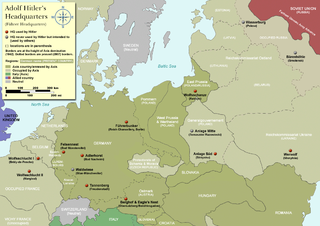 W
WAt the start of the Western European campaign of 1940, the Felsennest was the codename for one of Hitler's Führer Headquarters near Bad Münstereifel, Germany. It was much more cramped than Adolf Hitler's other field bunkers, having only four rooms. Hitler was at the Felsennest in the autumn of 1939, because there were plans to invade France and the Low Countries. He was there again on May 10, 1940 when the invasion took place.
 W
WThe Fieseler Fi 168 was a projected German ground attack aircraft designed in 1938 by Frederik Kassel, who created the aircraft after a request from the Technisches Amt of the RLM Reichsluftfahrtministerium -.
 W
WThe early phase of the Battle of the Atlantic during which German Navy U-boats enjoyed significant success against the British Royal Navy and its Allies was referred to by U-boat crews as "the Happy Time", and later the First Happy Time, after a second successful period was encountered.
 W
WThe Flammenwerfer 35, or FmW 35 was a one-man German flamethrower used during World War II to clear out trenches and buildings. It could project fuel up to 25 metres from the user.
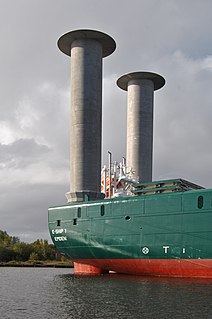 W
WAnton Flettner, Flugzeugbau GmbH was a German helicopter and autogyro manufacturer during World War II, founded by Anton Flettner.
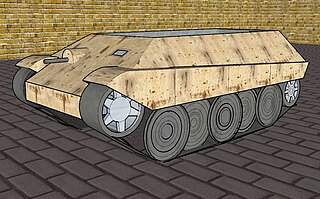 W
WThe Gepanzerter Mannschaftstransportwagen Kätzchen was a German armoured personnel carrier of late World War II. Auto-Union delivered two prototypes during 1944–45. The hull's shape was similar to the hull of the Panzerkampfwagen Tiger II, but much smaller. The vehicle had front wheel drive with five or six overlapping steel road wheels, possibly resembling the never-built E-25 "replacement tank"'s suspension system in appearance. Power was provided by a Maybach HL50 P engine.
 W
WThe Gotha Go 147 was a German experimental prototype reconnaissance aircraft designed in 1936. Designed by Gothaer Waggonfabrik and Albert Kalkert, construction of the two-seater aircraft was abandoned before the end of World War II.
 W
WThe Henschel Hs 125 was a German advanced training aircraft prototype featuring a single engine and low wing, designed by Henschel & Son and tested by the Luftwaffe in 1934. Only two prototypes were ever built.
 W
WI Army Corps was a corps in the German Army during World War II. It was established by upgrading the former staff of the 1st Division of the Reichsheer at Konigsberg on 1 October 1934.
 W
WInspector of Bombers was not a rank but a leading position within the High Command of the German Luftwaffe in Nazi Germany. The inspector was responsible for the readiness, training and tactics of the German bomber force. It was not an operational command. The senior commander position of this unit was renamed to General of Bombers in 1942.
 W
WInspector of Fighters was not a rank but a leading position within the High Command of the German Luftwaffe in Nazi Germany. The inspector was responsible for the readiness, training and tactics of the fighter force. It was not an operational command.
 W
WIV Corps was a corps level command of the German Army (Wehrmacht) before and during World War II.
 W
WKampfgruppe 100 was a specialist unit of the Luftwaffe during the early stages of World War II. It is best known as the first unit to use the "pathfinder" concept, with its aircraft being equipped with the latest radio navigation aids to find their targets and then dropping flares on them to mark the target for the following bombers.
 W
WThe kurzer 8 cm Granatwerfer 42 was a mortar used by Germany during World War II. It was developed as a lightened version of the standard German 8 cm GrW 34 medium mortar with a shorter barrel for use by paratroopers, but replaced the ineffective 5 cm leGrW 36 as that weapon's shortcomings became apparent. The kz 8 cm GrW 42 fired a bomb over 3 and a half times heavier twice as far as the smaller mortar, but was less than twice as heavy. It broke down into the standard three loads for transport.
 W
WThe M42 Truppenfahrrad was a military bicycle issued to the Heer and Waffen SS during World War II. Special equipment for military use was: the steering bar, the saddle, the toolbox and the porter at the back. On the steering bar were holders mounted for holding a variety of items, such as a half-shelter tent, clothing, and panzerfausts. The mid-section could be fitted to hold machineguns. The headlamp was made to work with dynamo and/or battery.
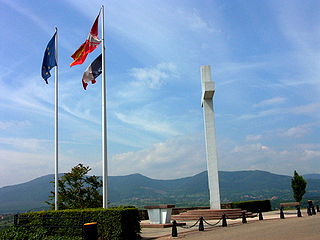 W
WThe term Malgré-nous refers to some men of the Alsace-Moselle region who were conscripted into the German Wehrmacht or the Waffen-SS during the Second World War against their will. Refused equivalent compensation until 2008, the term Malgré-elles refers to the Alsace-Moselle women conscripted into Nazi organizations against their will.
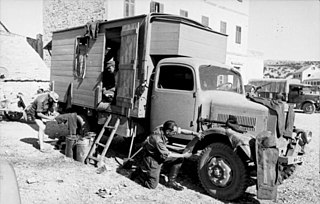 W
WThe Mercedes-Benz L3000 was a 4x2 3-ton rear axle drive truck used by Germany in World War II, powered by a Daimler-Benz OM 65/4 74 hp 4-cylinder diesel engine. It was used alongside the Opel Blitz, and proved even more reliable in rough terrain; and was used in all fronts and extensively by the Afrika Korps. It was manufactured in three versions, the L3000, the L3000A, and the L3000S, from 1938 to 1943; by that time more than 27,700 of all versions had been built. This made it the most produced Mercedes-Benz truck of World War II.
 W
WThe Festungsfront Oder-Warthe-Bogen, also called the Festung im Oder-Warthe-Bogen or Ostwall, and in Polish the Międzyrzecki Rejon Umocniony, MRU, was a fortified military defence line of Nazi Germany between the Oder and Warta rivers, near Międzyrzecz. The part around Międzyrzecz (Meseritz) has been colloquially referred to as the Regenwurmlager. Built in 1934–44, it was the most technologically advanced fortification system of Nazi Germany, and remains one of the largest and the most interesting systems of this type in the world today. It consists of around 100 concrete defence structures partially interconnected by a network of tunnels. Some of the forts and tunnels are available for visiting.
 W
WThe Pomeranian Wall, Pomeranian Line or Pomeranian Position was a line of fortifications constructed by Nazi Germany in the Pomeranian Lakeland region. It was constructed in two phases. In the years 1930-1935 it was constructed as a light defensive position in case of an attack from the Second Polish Republic against the German republic. The line of fortifications stretched from Landsberg an der Warthe to Baldenburg and Pollnow (Polanów). The fortifications had several impressive strong points, particularly near Deutsch-Krone (Wałcz) and the 'Hangman Mountain'. The second phase took place during the Second World War, in 1944, when after a series of defeats on the Eastern Front the Pomeranian Wall was renovated in order to stop the Red Army advance. Various battles along the Pomeranian Wall took place particularly from January to March 1945, for example, the Battle of Kolberg, with the Red Army and units of the Polish People's Army eventually breaking through the wall in various places.
 W
WThe "second Ruhr" was a World War II area that included the "southern regions of Germany, the plateau of Bohemia, and Silesia" where Nazi Germany military production was dispersed away from Allied bomber bases in England. After Allied Operation Pointblank bombing of German aircraft facilities had begun, Nazi Germany dispersed the 27 larger aircraft works across 729 medium and very small plants, and oil production was also dispersed. However, by October 1943, long-range bombers could reach the area.
 W
WThe German language term Stab was used during World War II to designate a headquarters unit of the German Luftwaffe. There were Stab units at the level of a Gruppe or Geschwader – units that were equivalent to wings and groups in the air forces of the English-speaking world. Stab units directly controlled aircraft as well as controlling those belonging to subordinate units.
 W
WThe Tarnewitz test site was a Luftwaffe weapons testing facility and airfield in Nazi Germany, built on an artificial peninsula at Boltenhagen on the coast of the Baltic Sea, as one of the four Erprobungsstellen stations of the system of Luftwaffe test establishments headquartered at Rechlin.
 W
WOn December 11, 1941, the United States Congress declared war upon Germany, hours after Germany declared war on the United States after the attack on Pearl Harbor by the Empire of Japan. The vote was 88–0 in the Senate and 393–0 in the House.